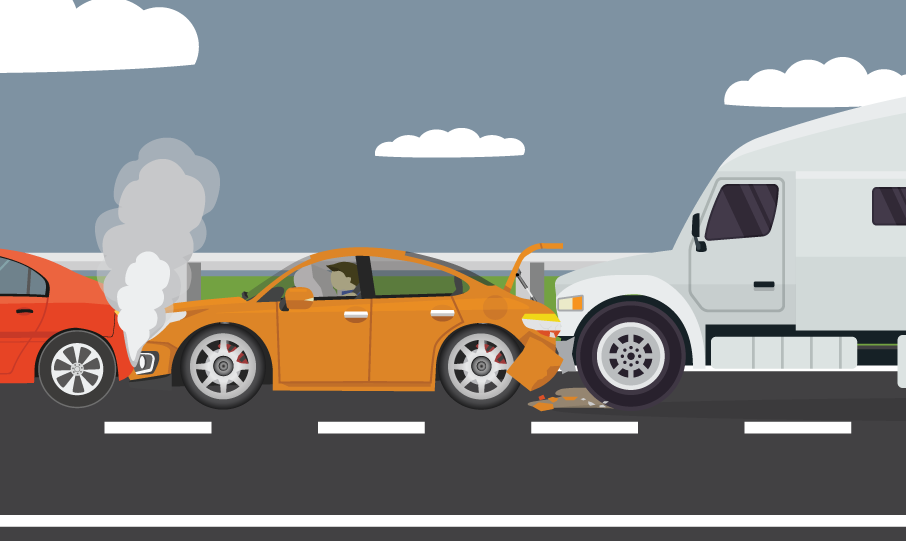Accidents Happen

It’s a Matter of Time
Whether you drive for a living or just run arrands on the weekends, the more time and miles spent behind the wheel, the more odds increase for an accident to happen. Commercial drivers in particular, have many hours and miles under their seatbelts. So it’s a great idea to have procedures on hand when the unexpected happens, as any driver will be under a high level of stress at the scene of an accident.
After a crash, your driver’s initial actions can be crucial in minimizing the short and long-term effects of the accident on themselves and your company—from both physical and legal perspectives. Ensure that your entire team is well versed on the steps they should take, and consult your insurance company and attorney (we’ll say this a few times) to build a truly comprehensive checklist.
Hope Is Not a Strategy
Before we focus on the immediate aftermath of an accident, we need to take a moment to look at the protection of your company as a whole. If you don’t have a dedicated and highly-trained accident response team, it’s in your best interest to create one ASAP. When the unexpected happens, you need your staff ready to jump into action to support your driver and the business.
What all does that entail? Funny you should ask, as Idealease’s Safety and Compliance Team already has you covered in great detail with their Safety Bulletin: Is Your company Prepared in the Event of an Accident? From building your response team and creating a policy for drivers, to photographing the scene and even preparing to handle news and social media, we’ve got the information you need to build a comprehensive accident response strategy.
While you’re there, sign up to have Idealease’s weekly Safety Bulletins sent directly to your inbox, and keep an eye out for the 2021 Safety Seminar schedule we’ll be posting in May for events taking place September through November.
Common Sense Under Duress
Now, let’s talk about the driver involved in an incident. Even if uninjured, immediately following an accident, anyone can still be disoriented, confused, or unsure of what just happened. Because of this, it’s important to train your truck drivers to follow some basic steps to help secure the scene, gather information, and cooperate with law enforcement.
First things first:
- Drivers should take a deep breath and remain calm. They are still employed, still on duty, and still representing your company—cooler heads need to prevail.
- Stop the truck, shut off the engine, and secure the brakes. Drivers should not move the vehicle unless told to by police or posted signage. Activate the flashers and place hazard reflectors around the truck right away.
- Call for help immediately. If 911 doesn’t work, your driver should remain on the scene and send bystanders for help. Only in a life-threatening situation should anyone leave.
- Administer first-aid only as directed by company policy, approved by the insurance company and attorney. Legal cases can be made for and against assistance with injuries that are less than life-threatening, so professional input is required.
- Write down names, addresses, phone numbers, and license plate numbers of any witnesses and include any other driver’s license number and insurance policy information.
- While on the scene and until there’s time for objective review and time to consult an attorney, never admit fault or apologize.
- Never coerce or intimidate other drivers, witnesses, or law enforcement.
- Take time-stamped photos of the site that include all sides of each vehicle, close-ups of specific damage, license plates, vehicle interiors (even with unharmed people inside), the road leading up to the accident, and panoramic shots of the entire scene.
- Never take pictures of any injured or deceased people, period.
- Sketch a diagram of the accident scene, describe the damage done to all vehicles involved, and include the address and name of the owner of any other damaged property.
- Contact your company’s accident response team when it’s safe to do so and a preliminary report should be filed right away.
Damage Control
Our list is only the beginning of what should be a comprehensive post-accident procedure that rides along with your team in every cab of every vehicle, everywhere. If you don’t yet have an accident response team, or a checklist and full process for your drivers to follow, Idealease strongly encourages you to create them right away.
Take these suggestions to your insurance company and your attorney (that’s the third time we’ve mentioned that—for those counting), and work with them to build out a plan to help your drivers through what could be an extremely stressful experience.
It doesn’t matter if your trip is professional or personal, across the continent or around the block, getting out on the road always carries an element of risk. Protect your team and your company by creating, training, and enforcing a post-accident policy that covers the bases and then some.








